When childhood dies, its corpses are called adults and they enter society, one of the politer names of hell. That is why we dread children, even if we love them, they show us the state of our decay.
—Brian Aldiss

C18th object drawn by Philippe Simmoneau. Amateur translation of the title: “Tree of Iron or Red Iron Vitriol”
This image illustrates a report by L. Lemery le Fils (1677-1743) on the presence of iron in plants. Lemery presents his research on “les cendres de castoreum dont les grains sont attiré par l’aimant.” (Ashes of castoreum, particles of which are attracted by magnet). The castoreum referred to is evidently a plant, not the preputial follicles of the beaver used in perfumery (below left).

The plant in question one assumes, is the castor bean plant, Ricinus, (above right) from which the purgative castor oil and the poison ricin are derived. Lemery describes putting the ashes and sulfuric acid in a pot moistened with water and the flakes of acid-charged iron rising from the ashes like a living thing.

A pin drops with a deafening clang, the sun and old aquariums buzz, numinous objects provoke “epiphonies” which keep the amateur in a state of perpetual awe.
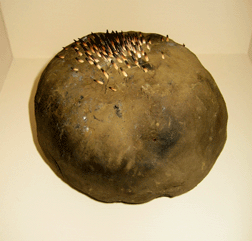
Object by Richard Johnson. Barnsley, Yorkshire, June, 2005.
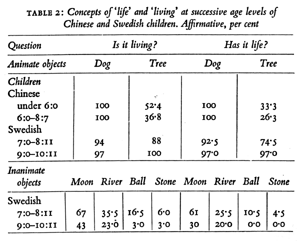
“We have to choose between the quick and the dead. The quick is God-flame, in everything. And the dead is dead. In this room where I write, there is a little table that is dead: it doesn’t even weakly exist. And there is a ridiculous little iron stove, which for some unknown reason is quick. And there is an iron wardrobe trunk, which for some still more mysterious reason is quick. And there are several books, whose mere corpus is dead, utterly dead and non-existent. And there is a sleeping cat, very quick. And a glass lamp that, alas, is dead.”
—D. H. Lawrence

In Mississippi John Hurt’s version of “John Henry” the heroic steel-driver lays down his hammer “all painted red.” (With the hero’s blood, one supposes, as if he’d burst in his exertions). This red hammer can be added to a hoard which includes William Carlos William’s “Red Wheelbarrow” on which so much depends, Bob Dylan’s “Little red wagon, little red bike” and, indeed, his “white ladder all covered in water,” in an inventory of numinous literary objects in which colour is a significant factor.
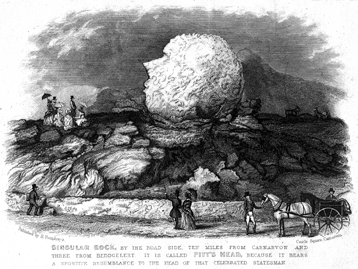
The caption reads:
SINGULAR ROCK, by the road side, ten miles from Carnarvon and three from Beddgelert.
It is called PITT’S HEAD, because it bears a sportive resemblance to the head of that celebrated statesman.
.gif)
Two near identical objects, only one of which is numinous.
Two extremely different objects, both of which are numinous.
Go figure.
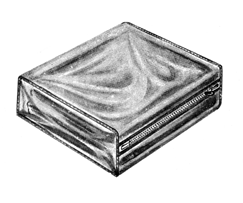
Excerpts from notes on teaching a creative writing class to “gifted and talented” 14 to 16 year olds, summer ’06:
Read from Al Alvarez article. “The Dark at the Top of the Stairs” in New Yorker (March 8, 1993) abt childhood fears.
“The best ghost-story writers know that by night fear is a free agent, which will fix on anything that comes to hand. In M. R. James’s ‘Oh, Whistle and I’ll Come to You, My Lad’ the creature, whose ‘one power was that of frightening,’ embodies itself in a sheet from an empty bed and confronts its victim with ‘a face of crumpled linen.’”
“Nothing is definite, nothing precise. Evil is a free-floating force and can inhabit the most common-place objects.”
“The creature from the black lagoon or the morgue or the pit or outer space is always easier to live with, however dangerously, than the nebulous shapes created by the imagination running free. Once you can put a face on evil, it becomes, in Hannah Arendt’s word, banal.”
“Part of the primitive fear of darkness is connected to what happens to us when we sleep. Not only are we vulnerable to intruders and predators. We are also vulnerable to our dreams…”
We talked a bit abt what is and isn’t scary. Fascinating to hear what they remembered from childhood. One girl said the bit of shower curtain where it stuck to the edge of the tub scared her when she was little. I told them about the sinister BLANKET BAG. They wrote Haunted Haikus, eg:
Mother’s broken shoe.
The sole flaps loose like a mouth.
At night it walks by itself.

Bank sign, Duesseldorf, 2005

Misericord, Amsterdam cathedral, 2006

“Just as man himself has an ambivalent potential for good and evil, so do objects. According to numerous informants, the most dangerous and poisonous substance is a simple lime, properly prepared by the bokor. If a bokor cuts a lime transversely while it is still on the tree, the half that remains on the limb overnight becomes the most virulent of poisons, more deadly even ‘than the three drops of liquid that issue from a dead person’s mouth.’ The other half, taken into the temple, becomes its equally potent antidote. The lesson is clear. The lime that is left on the tree remains in the realm of nature — uncivilized, threatening, poisonous. The other half, taken into the abode of the religious sanctuary, is tamed and humanized, and thus becomes profoundly curative.”
p. 52, footnote, “Passage of Darkness, the Ethnobiology of the Haitian Zombie”, by Wade Davis
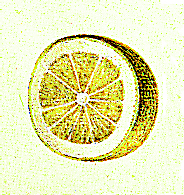
You mean to tell me that a li’l ol’ lime cut in half by a bokor can be more numinous…
… than THIS?

[A digitated lemon with very curious finger-like extrusions and outgrowths. From Cassiano dal Pozzo’s “Paper Museum”]

In “Memories of My Father Watching TV”, Curtis White writes:
“Once in his reach, Neal would take a horrible chunk of heavy metal, like an iron pineapple, like an icon of some unconscious horror, out of the car trunk.
(An old question resolved: the location of the unconscious is the car trunk.)
…Perhaps once this thing had a mundane function, but rust had melted the angles away and now it was just a massive object that seemed to beg people to use it for murder.”
(Or perhaps it was something plumbers had excavated from the bowels of my sewage system… . I had this conversation with the plumber: ‘Well here’s the problem, mister.’ ‘My God, what the hell is that thing? How did it get in my soil pipe?’ ‘Beats me.’ he rolls the snotty tumor around in his crusty hands. Of course, I knew darned good and well what I wouldn’t tell the plumber, that it was something from my brain that had floated loose and had been circulating in the house system for months, finally coming to rest in the pipe leading to the community sewer.)
[…]
…I would happily have killed my father with the chthonous burl of iron…
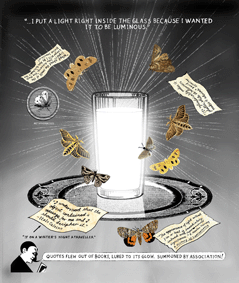
by GEORGE TTOOULI
(posted on the Gists and Piths blog)
There’s a curious lineage in poetry which focuses on the use of language both as a means of looking for the charge in objects and as a way to invest objects with energy. The names for this charge are various. Aristoteli described the ‘substance’ and ‘accidence’ of objects; we might infer that the greater an object’s substance (its non-material impact) the greater its energy. Hence transubstantiation: the shift of an object from the everyday into something with religious significance.
“But as air, melody, is what strikes me most of all in music and design in painting, so design, pattern or what I am in the habit of calling “inscape” is what I above all aim at in poetry” –Gerald Manley Hopkins, letter, 15 February 1879
Mostly, the quest to discover charge has been a religious search. Hopkins perhaps crystallised the phenomena best of all, referring to ‘inscape’ and ‘instress’ in ways that seem premonitive for concepts of intelligent design. Predecessors such as Wordsworth and fellow agnostic or atheistic Romantics struggled to find the correct vocabulary, having few terms beyond the religious set with which to approach inspiration, spirit, the parts of the world that gave sudden appeal to their imaginations and subconscious. Hymns to spirits, eternity and other, frankly, abstract approaches, are agnostic at best.
“The concept of inscape shares much with Wordsworth’s “spots of time,” Emerson’s “moments,” and Joyce’s “epiphanies,” showing it to be a characteristically Romantic and post-Romantic idea.” –Glenn Everett, Ph. D., ‘Hopkins on “Inscape” and “Instress”‘, The Victorian Web, 1988
In contrast, Joyce’s ‘epiphanies’, CS Lewis’s hunt for moments of ‘joy’, or any other number of descriptions of charged moments are overtly religious. The beauty of the natural world, or the power of language to inspire, move, or realign the bones (accidence) of both the object and the perceiver, has largely been taken as an excuse to get down on one’s knees and give thanks.
“The Proper METHOD for studying poetry and good letters is the method of contemporary biologists, that is careful first-hand examination of the matter, and continual COMPARISON of one ‘slide’ or specimen with another”–Ezra Pound, The ABC of Reading 1934
At some point, though, the secular door creaks open. Perhaps it is with Ezra Pound: his militant approach to charge as being meaning stacked on meaning seems to imply that an object’s substance can be wholly interpreted through analysis. Pound’s approach seems to be that the poet, in constructing a line of poetry, will stack only the meanings intended, without room for accidents (pardon the pun). Every division of the poem with the critic’s scalpel reveals a new meaning, until no layers are left and the poem can be discarded, lifeless, with no trace of God between the scraps.
Pound’s description of penning ‘In a Station of the Metro’ is one struggling to find the correct vocabulary – words like ‘beautiful’ and ‘lovely’ recur in his description. Eventually he settles on “a language in colour” – actually a description of synaesthesia, though he rubbishes it as a kindergarten nonsense. It shows the first glimmer of an acceptable secular vocabulary in which to couch an understanding of the energy language is capable of.
“I am not speaking of the common and natural capacity of perceiving objects in all their detail, but of the power of the metaphor to only retain their essence, and to bring them to such a state of purity that their metaphysical significance appears like a revelation.” –Odysseas Elytis, Nobel Lecture, 8 December 1979
More recently still, Elytis’ description of ‘revelation’ – the heightened knowledge that comes from experiencing charge – seems to tail off into religious experience once more. However, there is a more established doubt in this: the comparison is a simile. More importantly, the emphasis here is on a hierarchy of experience within the real: the common against the uncommon; a modernist concern, but one that does not necessarily demand a leap to the divine.
Or perhaps it is part of a counter reformation, an attempt to cling on to the past. Scientists struggling to hold onto their Christian beliefs in the face of basic contradictions between Biblical information and Darwinian theory, hold that the marvels of scientific discovery are indicators of a greater power, rather than a disproof of divinity. The turning to charge, energy, meaning, instead of literalness, is a succour.
“A numinous object is one in which matter, form and situation combine to ‘haunt’ or otherwise fascinate the imagination.” –Peter Blegvad, ‘On Numinosity’, The Amateur, date unspecified
But more recently, I encountered the wonders of ‘numinometer’ – a measuring device for exactly this thing Robert Graves said there is no yardstick for. An example of imaginary media, the numinometer can actually determine the quality of a metaphor (although primarily it is used for objects); it can measure charge. The veil lifts. I started to think that this is an attempt to nail the coffin shut on the whole ‘God is in the detail’ mentality.
As Deborah Rose describes on visiting the Amateur office, “The Holy Grail is a classic example of a ‘numinous object.’ But the Grail’s numinous charge is invested by collective faith, i.e. it’s ‘sacred.’ The folks at Amateur, the lady in the lab coat presumably among them, tend to concentrate more on secular objects. Alfred Hitchcock’s glass of milk, for instance, with the light he put in it to make it luminous. Did I tell you the folks at Amateur are weird?”
Far from weird, I would consider this the logical step. Having monitored the rise of the non-divine explanations of rainbows, people and planets through the twentieth century, the present-day analyst should take it for granted that further exploration and invention should provide alternatives to the long-dominant religious myths about the world. As in the God Detector song, from Blegvad’s ‘On Imaginary Media’ play (a ‘son et lumiere’ multimedia staging), in which a cartoon Levi (of leviathan fame) enters a brothel on a quest for the divine and discovers none, but ends up enjoying the service despite. (Some religious types would probably complain that a brothel isn’t the best place to look, but then again, Jesus scored pretty well with Mary Magdalene.)
A further leap is taken in Blegvad’s play: in one case, a machine invented to allow users to experience Virtual Death, in much the same way as Virtual Reality works, seems to provide users with a chance to actually commune with God. One journalist who trials the device, is quoted in a visually presented newspaper article, as reaching the light at the end of the tunnel and finding incredible beauty. The visual scrolls down the article and I read, “I met Christ and God…” and so on, but the voice-over unnervingly demands that the rest of her speech be skipped. The presentation is one of tabloid-mania, unreliability; the journalist’s character created as slightly odious, both for her initial scepticism of the imaginary device and for her ensuing religious awakening through it.
The aesthetics do not shy away from the divine, they explore ways to deny it’s presence. It is an assertion: if we have the new vocabulary, the secular expressions, scientific or otherwise, then it should be used; bring in the new, in other words. There is a celebration of the substance made substantial, despite the caveat of it all being imaginary, invented, not yet real. The art of Amateur is one of invocation and also celebration of the secular; a celebration of life as we know it, not as we layer it.
The sequence then:
– The identification of charge/substance vs. accidence
– The attribution of charge/instress to the spiritual
– The attribution of charge/numinosity to the secular
And the logical progression from this? Undoubtedly: the use of numinosity to disprove divinity. In a hundred years or so, we will probably see artists questing for the one lump of coal in the diamond pile.
The excessive drive to charge everything, to make the everyday special, from a cup of coffee to a pile of raw meat, from nothing more than a splash of random colour to the most mundane civic building, to every scrap of language, shred of scribbles, be it painted by animals, written by monkeys, or spoken by dogs; the madness of the internet in giving everything voice, recording everything ever written; in saying that everything should be archived and given value, that all is equal: this will necessitate backlash and, in order to preserve the hierarchy of emotional reaction that has kept us so securely divided through millennia, artists will begin to celebrate the banal, the awful. This will be the only proof left that there was ever any quality to begin with.
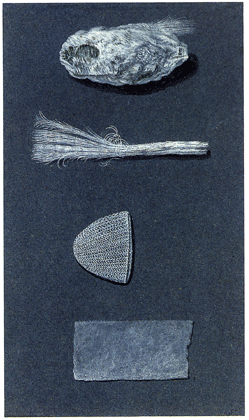
In our files under NEW MATTER we find man-made polywater, edible cotton, element 118 (ununoctium), strange quark matter (a “strangelet nugget” of which we’re told could destroy the earth), dark matter, quorn, twisted nematic liquid crystals, superglue, electrically conductive polymers made using ruthenium as a catalyst, a lighter-than-air solid made of agar, etc. etc. BUT we don’t find ectoplasm. A single object (even an amorphous blob or spurt) of ectoplasm would be numinous enough to reconcile spirit and matter for once and all. So why is ectoplasm shunned? Simple: THERE’S NO SUCH THING. Granted, the membrane between Imagined and Real has always been pretty permeable here at Amateur — part of our mission being, in the words of our anthem, “worrying that wall/hurrying its fall” — BUT now that the irrational is no longer marginal (as Bill Moyers put it), now that the people calling the shots openly proclaim their contempt for the facts — in light/dark of that — is it any wonder that the unreal has lost much of its allure? “Scarcity value” affects numinosity same as it does the FTSE index, and these days what’s most scarce/valuable/numinous is hard evidence, empirically testable/re-testable TRUTH. Did I say “these days”? ‘Twas ever thus. Am I saying the Imaginary can’t be TRUE? Please. I concede that ectoplasm might be “more true than real” and, as such, should be granted equal status, at least, with a LITERARY OBJECT like STEIN’S SAC. I’ll make a note of it: ECTOPLASM — file under LITERARY OBJECTS.
Meanwhile, here’s a picture of four objects — an amorphous blob, a fly whisk, a skull cap and a till receipt — made of asbestos (also called mountain flax, earth flax, and mountain leather).
Given its notoriety as a carcinogen, this flame-resistant fibre has great numinous potential. It’s interesting to observe how different morphologies affect the charge.
[From the “Paper Museum” of Cassiano dal Pozzo]

“The search is what everyone would undertake if he were not stuck in the everydayness of his own life. To be aware of the possibility of the search is to be onto something. Not to be onto something is to be in despair.”
—Walker Percy, “The Moviegoer”, quoted by Lawrence Weschler in “Seeing is Forgetting the Name of the Thing One Sees, A Life of Contemporary Artist Robert Irwin”
“The man with the magnifying glass takes the world as if it were quite new to him. If he were to tell us of the discoveries he has made, he would furnish us with documents of pure phenomenology, in which discovery of the world, or entry into the world, would be more than just a worn-out word… . A philosopher often describes his ‘entry into the world,’ his ‘being in the world,’ using a familiar object as symbol. He will describe his ink-bottle phenomenologically, and a paltry thing becomes the janitor of the wide world.
The man with the magnifying glass – quite simply- bars the every-day world. He is a fresh eye before a new object. The botanist’s magnifying glass is youth recaptured. It gives him back the enlarging gaze of a child.”
—Gaston Bachelard, “The Poetics of Space”

“The finger which I carry about on me is a finger only as long as it is part of my organism; the moment I cut it off from my organism it is no longer a finger, it decays.
In the same way, if we think of man as a physical being separated by a few miles from the body of the earth he would decay just as a finger does if it is cut off from the man’s body. The delusion of man that as a physical being he is independent of the earth arises only from the fact that he can move about freely on the surface of the earth, whereas the finger cannot move about on the rest of his organism. If the finger could walk about on the rest of the body it would have the same delusion concerning man as he, as a physical being, has concerning the earth.”
—Rudolf Steiner, “Mystery Centres”, [Anthroposophic Press, ‘43]

The European Commission apparently outlawed the use pig’s heads to decorate the Swedish Christmas dinner table. As a fully-fledged meat-eater I object to this lilly-livered intrusion into our freedom to enjoy the natural beauty of animals on our carving boards.
information source: Mr. Clevberger, Swede.

Musicologist Marc Medwin writes from North Carolina: Does my blindness prevent me from experiencing numinosity? If, as the patriarch of 100 Years of Solitude insanely (but correctly) believes, the sun buzzes, then surely numinous objects emit sound as well as light? I hope such “charged” epiphonies are not limited to the sighted.

Gunther Neubaum from Fort Lauderdale, Fla, writes:
I don’t dare mention to my partner that the reason I haven’t complied with her repeated requests to get rid of our old aquarium is that, for me, the thing is charged with a powerful sense of immanence which just mesmerises me. I’d much rather watch it than our TV. Sure, OK, it collects dust and dead flies and smells a bit musty, and the glass is cracked and cloudy, etc. but, wow!
The device with rechargeable batteries. When they run down the device loses definition, if it were sentient we could say it’s having an ‘identity crisis’ but of course it’s not so we can’t. You’re shaving with it when the note of its buzzing drone drops and fades and suddenly instead of an electric razor you find yourself rubbing your jowls with a mobile phone.
Well, what if? What if quiddity, that which makes a thing itself and not something else, was as fluid and precarious, as subject to fluctuation and entropy, in a thing as identity is in a person? What if it required as much energy to maintain?
I went into the bathroom to shave this morning. Looked mournfully at myself in the mirror, noting the demographics of my beard: white stubble now outnumbers dark 2 to 1. And found that what I was holding in my hand was not the electric razor I thought I’d picked up but a mobile phone. Or a remote control for the TV. Or the one for the VCR. I can’t tell these gizmos apart.
That’s what prompted the ‘what if?’ scenario above. Because, as my batteries run down, I plan to amuse myself for as long as I can. My brain once blazed with ratiocinative candlepower. Now I’m experiencing a drop in wattage equivalent to a ‘brown out.’
A step on the stairs is nothing, 1 :
Nabokov’s memory from childhood of ascending stairs
with eyes closed so that he wouldn’t know when he’d
reached the top. His mother would playfully call “step”
as she had all the way up — young Vladimir’s
“foot would be automatically lifted… and then… would
sink into the phantasm of a step, padded, as it were,
with the infinitely elastic stuff of its own nonexistence.”
— Vladimir Nabokov, “Now Remember”, p. 25
A step on the stairs is nothing, 2 :
“You must have experienced the sensation of
stepping forward in the darkness, thinking that it is
the last step on the stairs only to find that it isn’t there.
You are thrown momentarily into a state of complete disarray.
Or when, in your bed, no matter how much care you take
before falling asleep, your legs suddenly slacken and you fall
you don’t know where. Ah well, in this country it’s always like
that. Everything is made of the same material as that absent step. “
—Jean Ferry, “Letter to an Unknown Person” published in
“Le méchanicien et autres contes” (1951), Gallimard